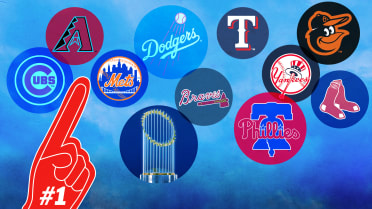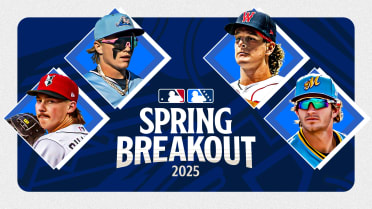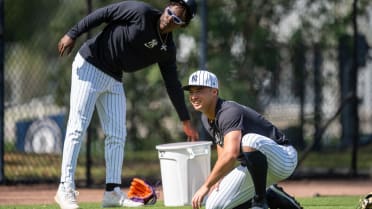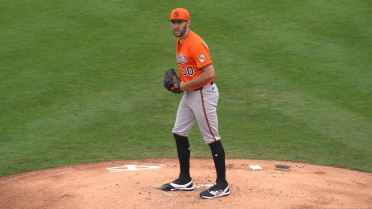Eye inserts let Nido see clearly at last
Plugs have alleviated discomfort from dry eye syndrome, dramatically improved vision
NEW YORK -- In his continued search for answers to the vision problems that have affected him all season, Mets catcher Tomás Nido recently had punctal plugs inserted into each eye. The devices cover the openings of his tear ducts and help his eyes stay lubricated, thereby easing the symptoms of dry eye syndrome.
Since receiving the punctal plugs and medicated eye drops, Nido has seen his vision improve dramatically.
“It’s kind of alleviated the eye pressure that I had,” Nido said. “I felt like I had somebody pushing on my head. I had a headache for like 72 hours straight.”
Nido’s vision saga dates to 2019, when he underwent LASIK surgery. Some recipients of that procedure experience complications after about five years, and Nido realized this spring that he might be among them. Beginning with vision trouble during night games, his issues worsened during the regular season. Once starting catcher Omar Narváez suffered a long-term injury in April, Nido placed additional pressure on himself to play through the problem, but it reached a tipping point last week in Cincinnati.
“It was a ticking time bomb,” he said.
Upon going on the injured list due to dry eye syndrome, Nido saw a doctor who confirmed that diagnosis as well as a corneal irregularity in his left eye and recommended punctal plugs. The nonsurgical procedure was uncomfortable but immediately improved his vision. The downside? Nido must regularly wear contacts again for the first time since 2019, rendering his LASIK operation essentially useless.
“I’ll try anything at this point,” Nido said. “But it’s been good so far. … I haven’t been able to see out of that left eye like this in a long time.”
Over the past few days, Nido has caught pitches from a catching machine and taken batting practice on the field, suggesting a potentially quick return. He is already eligible to come off the IL, but the Mets are giving him more time to acclimate to his contacts before making that move. There is no rush; team officials have been mostly pleased with the progress of preseason top prospect Francisco Álvarez, who has served as their everyday catcher in the absence of both Nido and Narváez, and veteran backup Michael Pérez, who went 4-for-4 in his lone start of the season Saturday.
Although Nido stopped short of fully blaming his offensive struggles on his eye condition, he was batting .118 with a .266 OPS prior to landing on the IL. His numbers were notably better during day games, which presented less of a problem for his vision woes.
“I would see a pitch and I would swing, then look at video after and be like, [wow],” Nido said. “I’m not picking the ball up.”
Once healthy, Nido will become part of a complicated catching equation for the Mets, who signed veteran Gary Sánchez to a Minor League contract on May 9. Their top four catchers are:
• Narváez, who is set to begin a rehab assignment late next week and could return from a left calf strain by early June;
• Nido, who inked a two-year, $3.7 million guaranteed contract over the offseason;
• Álvarez, who has struggled offensively but shown defensive improvements during his second stint in the Majors;
• Sánchez, who can opt out of his contract on Friday if the Mets do not add him to the 40-man roster.
The Mets can easily jettison Pérez when it comes time to make a move, but if they want to keep Sánchez around long term, they will likely need to option Álvarez to Triple-A Syracuse or designate Nido for assignment. The former seems more likely, given that it would allow New York to keep all four catchers in the organization -- assuming it believes Sánchez is worthy of that faith.
As of Wednesday afternoon, Mets officials were still deliberating the fate of Sánchez, who is four years removed from his last All-Star season. One team official mentioned the possibility of carrying both Sánchez and Narváez once the latter returns to health.
Senior Reporter Anthony DiComo has covered the Mets for MLB.com since 2007.




